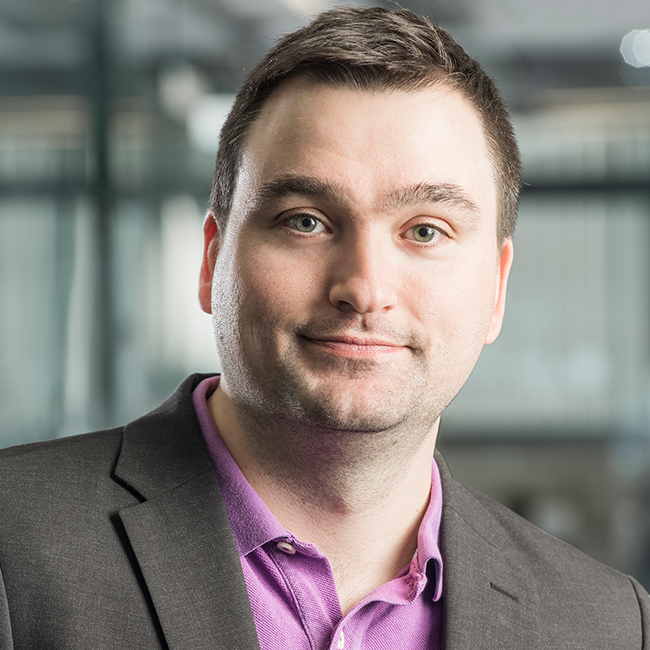Breaking Barriers: an alternative route to Higher Education for young people with ASD
By Konstantinos Tomazos - Posted on 21 June 2023
Dr Kostas Tomazos helped launch the innovative Breaking Barriers programme and is its SBS Academic Director. Here, he discusses the recent study undertaken into the programme and outlines some key findings.
Too few people with learning disabilities aspire to University or consider this a possible path. With no standardised route out of secondary school for young people with learning difficulties, uncertainty and confusion persist for individuals and their families. Preparing young people to transition from secondary school to higher education and employment is critical for young individuals. Failure to manage transition or bad transitional planning is one of the leading causes of poor future outcomes for people with learning difficulties. While there is some support after high school, this valuable lifeline is withdrawn for young people with less severe conditions, creating a gap in accessing post-school support services.
True to its commitment to being a socially progressive institution, the University of Strathclyde joined forces with ENABLE Scotland and key industry partners such as STV and ScottishPower to deliver transferrable skills for young individuals with learning difficulties - particularly those with ASD (Autism Spectrum Disorder). The Breaking Barriers Programme furnishes young people with ASD with transferrable skills and work experience with participating employers. Besides the transferrable skill set, the main objective is to improve learners' aspirations by allowing them to participate in learning within the university environment.
The ground-breaking qualities of Breaking Barriers and the students' enthusiasm delivered acclaim and several awards to the Programme. It won the Spotlight Award at the Scottish Knowledge Exchange Awards in 2020; the Widening Participation/Outreach Initiative of the Year at the Times Higher Education Awards in 2019; the Youth Employment Award at The Herald Diversity Awards 2018; it was a finalist in the Pioneering Project category at the Scottish Charity Awards 2018; and shortlisted for Education Initiative of the Year at The Herald Society Awards 2018. While the awards and the acclaim are welcome, what is still missing from the landscape is an articulated path to a full degree and employment opportunity that will become a well-mapped alternative route into higher education and employment.
Recently we undertook a comprehensive study of the Programme that involved interviewing several alumni and using cognitive mapping techniques with the participation of key programme stakeholders. The results were identifying key challenges, emerging actionable ideas, and developing a strategic vision to deliver a clear path into higher education and employment.
Our findings show that despite people's best intentions, these young individuals with ASD must adapt and thrive within a physically configured environment for neurotypical individuals. It is not difficult to see how these barriers can affect the lives of individuals, but also the propensity of employers to take on the challenge of making the changes required to accommodate people with ASD.
The most significant issue identified was the narrative and general discourse surrounding living with ASD. The low expectations described by participants evoke disappointment and sometimes anger. They want to be heard and seen - not as charity cases but as equal members of society with much to offer. They hate the stigma that generally comes with ASD, which is reinforced by socially constructed norms and social inertia that influence identity construction.
Participants highlighted that positive identity practices must be encouraged and revisited to ensure that identity spread does not take effect. The young people participating in the study do not see their condition as the most dominant frame for their identity. They see their condition as a predicament, not a deficit. Yes, the world is in many ways against them and not configured to their needs but recognising their predicament can make the most of their neurodiversity qualities and different brain wiring.
Armed with this understanding, a panel of key stakeholders, under the author's guidance, used SODA to capture actionable ideas to deliver critical interventions to deliver on what the alumni identified as the vital desirable outcomes. These were then examined considering existing resources and capabilities before settling on three key points of the strategic vision for the Programme going forward: Content, delivery and learning environment; Raising awareness and profile; and Shift narrative.
Key to delivering this strategy are the following five recommendations:
1. Breaking Barriers to engage with ASD experts and disability services to deliver an assessment of the learning scape, including on-campus amenities
2. Organisers to continue dialogue with students
3. Breaking Barriers team to lobby funding bodies to offer dedicated places for Breaking Barrier graduates on graduate apprenticeship schemes
4. Breaking Barriers team to organise an employers' forum to raise awareness among potential industry partners
5. To engage with academia to push the narrative beyond the ASD spectrum
Finally, while the above strategy will take time, the blueprint is already being tested with considerable success. One of the programme’s alumni was offered a place on the University’s Business Management graduate apprenticeship (GA) with the support of one of our industry partners. This fully employed graduate is now in the final year of their GA study; they embody the vision for Breaking Barriers - an articulated path into academic study and employment in four steps:
1. Engage with Enable and specify their career aspirations
2. Join the programme (choose one of our three faculties involved in Breaking Barriers)
3. Engage with industry (part of workplace applied learning)
4. Secure a funded place on the Graduate Apprenticeship programme (to appropriate faculty)
It is essential never to lose sight of the needs and requirements of young people with ASD, while also delivering a clear path that challenges and excites them- this is the only path to meaningful inclusivity; a path of clear priorities and positive identity inspired by the neurodiversity movement. To this end, engaging with academia and experts to push beyond the confines of the ASD spectrum emerges as the start of a continuous dialogue and research effort that must underpin Breaking Barriers.
For more information on Breaking Barriers, and for expressions of interest, please contact Enable Works at: https://www.enable.org.uk/enable-works/our-services/breaking-barriers










